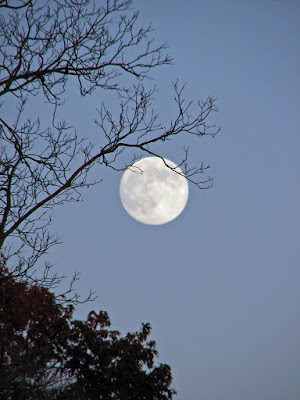Moon Illusion, Supermoon & Micromoon, Solar eclipse & Lunar eclipse, Yellow moon, Harvest moon and Moon phases
WHY DOES THE MOON SOMETIMES APPEAR LARGER?
At times you might have noticed the moon with its humongous size floating in the sky mostly when its near the horizon and at other times it seems like a small white disk floating in the sky. The variation in the size is caused by two reasons:
1: Optical illusion:
When the Moon is near the horizon you can actually compare it to reference objects such as trees or buildings, so in comparison it looks bigger but when the moon is above you then there is practically nothing to compare it to so it looks smaller.
Another factor to consider is the shrinking effect on objects, whenever we move away then the buildings near horizon shrinks or look smaller but that obviously doesn’t work with the moon which gives an illusion of the moon being a lot bigger.
2: Moon's orbital path:
One another reason is that the moon’s orbit around the earth is elliptical so the lunar distance varies as much as 42592 km, making the moon look slightly bigger at perigee (when it’s closest to earth).
SUPERMOON & MICROMOON
Supermoon:
Whenever a full moon or a new moon occurs close to its perigee (when the moon is closest to earth), its known as Supermoon.
Supermoon is the largest apparent size of moon visible from earth.
Micromoon:
Whenever a full moon or a new moon occurs close to its apogee (when the moon is farthest from earth), its known as Micromoon.
SOLAR ECLIPSE & LUNAR ECLIPSE:
Solar eclipse:
A solar eclipse can happen at the new moon when the moon passes between the sun and the earth, and blocking the sun from view.
Lunar Eclipse:
A Lunar eclipse occurs when the earth, sun and moon align in space with earth at middle and earth’s shadow falls on full moon blocking it from view.
NOTE: Lunar and Solar eclipse would be taking place every month at full and new moons, but it would only be true if moon’s orbit of earth lied in the same plane as earth’s orbital plane.
HOW CAN YOU SOMETIMES SEE MOON IN DAYLIGHT?
Any clear morning the moon can be visible . Although many people are surprised to see moon in complete daylight but it’s a completely normal occurrence.
Because of earth’s rotation moon is above the horizon every 12 hours out of 24. Since those 12 hours almost never coincide with the 12 hours of daylight so there is high probability of observing moon in daylight.
Two conditions must be met for the moon to be visible in daylight:
1: Moon must be bright enough so that its light penetrates through the scattered blue light in the sky.
2: The moon must be high enough in the sky to be visible.
WHY DOES MOON SOMETIMES APPEAR PALE YELLOW?
This effect is caused by the atmosphere of earth due to scattering of light.
When the moon is near the horizon it passes through more of the atmosphere compared to when its directly overhead. Due to more exposure to the atmosphere all the colors are scattered and since Red, yellow are least scattered so it reaches our eye and we see moon as pale yellow.
WHAT IS A HARVEST MOON?
 |
| Harvest moon |
Sometimes moon can also be orange when it is directly overhead. This happens due to particles in air. When this occurs in fall it is known as the Harvest moon. In fall many farmers are harvesting the crops and dust from the soil and crops floats into the atmosphere causing pollution in the air.
The size and type of particles in air determine the color of moon you will see.
MOON PHASES:
From full moon to new moon there are a total of 8 phases of moon these are:
- New moon
- Waxing crescent
- 1st quarter
- Waxing gibbous
- Full moon
- Waning gibbous
- Last quarter
- Waning crescent







Comments
Post a Comment